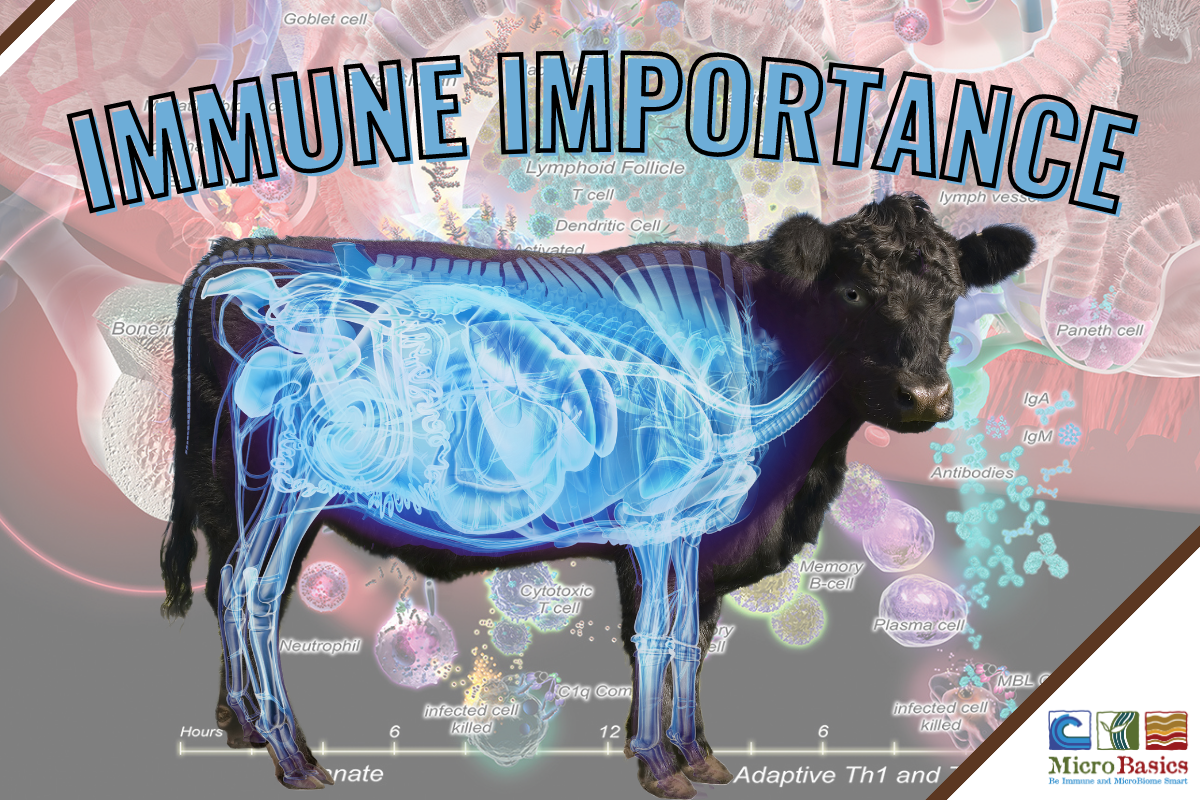The immune system is a vital component of the overall health and well-being of all animals, including beef cattle. A strong and healthy immune system is essential for preventing and combating infectious diseases and optimizing animal productivity and profitability.
Infectious Disease
Beef cattle are susceptible to a wide range of bacterial, viral, and parasitic diseases, which can cause significant economic losses for producers. These diseases can impact animal health and well-being, reduce productivity, and increase mortality rates.
Bovine respiratory disease (BRD) is one of the most significant causes of morbidity and mortality in feedlot cattle. BRD is a common respiratory illness that affects cattle, caused by a complex interaction of multiple pathogens such as viruses, bacteria, and environmental stressors. The disease can cause fever, cough, runny nose, and difficulty breathing, leading to significant economic losses in the livestock industry. The immune system plays a critical role in defending against BRD by recognizing and eliminating invading pathogens. The first line of defense is the innate immune system, which includes physical barriers such as mucus, and immune cells such as neutrophils, macrophages, and dendritic cells that engulf and destroy pathogens. If the innate immune system fails to eliminate the invading pathogens, the adaptive immune system kicks in, producing specific antibodies that recognize and bind to the pathogen, or T-cells that can directly attack infected cells. The adaptive immune response can take several days to develop but provides long-term protection against reinfection by the same pathogen. However, BRD can overcome the immune system, leading to a persistent infection and a chronic inflammatory response that can cause lung damage and compromise the animal’s health. Therefore, early detection and appropriate management strategies, including vaccination and antimicrobial therapy, are crucial in preventing and controlling BRD in cattle.
Immune System Balancing Act
A robust immune system is critical for preventing and controlling these diseases. When a beef cow or calf is exposed to a pathogen, the immune system will recognize it and launch a response to eliminate it. This response involves the production of antibodies, which can identify and neutralize specific pathogens, as well as the activation of immune cells, such as white blood cells, which can engulf and destroy invading microbes. In addition to fighting off infections, the immune system plays an important role in maintaining overall health and well-being. For example, the immune system helps to remove damaged cells and tissues, regulate inflammation, and promote tissue repair and regeneration.
Immunometabolism-The cost of disease
The body makes a lot of adaptations to make sure the immune system has what it needs to combat infection. Animals faced with an immune challenge have a dramatic change in nutrient availability in the bloodstream. Turning on a breakdown of body fat when the animal doesn’t have enough energy. That affects the building blocks of protein synthesis available for normal growth and development.
Immune response must maintain Homeostasis.
In conclusion, the immune system is a critical component of the overall health and productivity of beef cattle. Ensuring that beef cattle receive adequate nutrition, proper housing and management, and appropriate vaccinations and treatments can all help to support a healthy immune system. By understanding the importance of immune function and implementing appropriate management practices, producers can help to ensure that their animals stay healthy and productive, while also promoting animal welfare and sustainability in the beef industry.
Disclaimer: The following material has been generated using artificial intelligence (AI) technology. The content and information provided are based solely on patterns and data available up until September 2021. While efforts have been made to ensure accuracy, there may be errors, omissions, or inaccuracies present in the generated content. This material should not be considered as professional advice or a substitute for human-generated content. Users are encouraged to verify the information independently and consult relevant experts or sources for specific guidance. The responsibility for any actions taken based on the information provided lies solely with the user. The AI model, OpenAI, and its developers bear no responsibility or liability for any consequences or damages that may arise from the use of this material.

